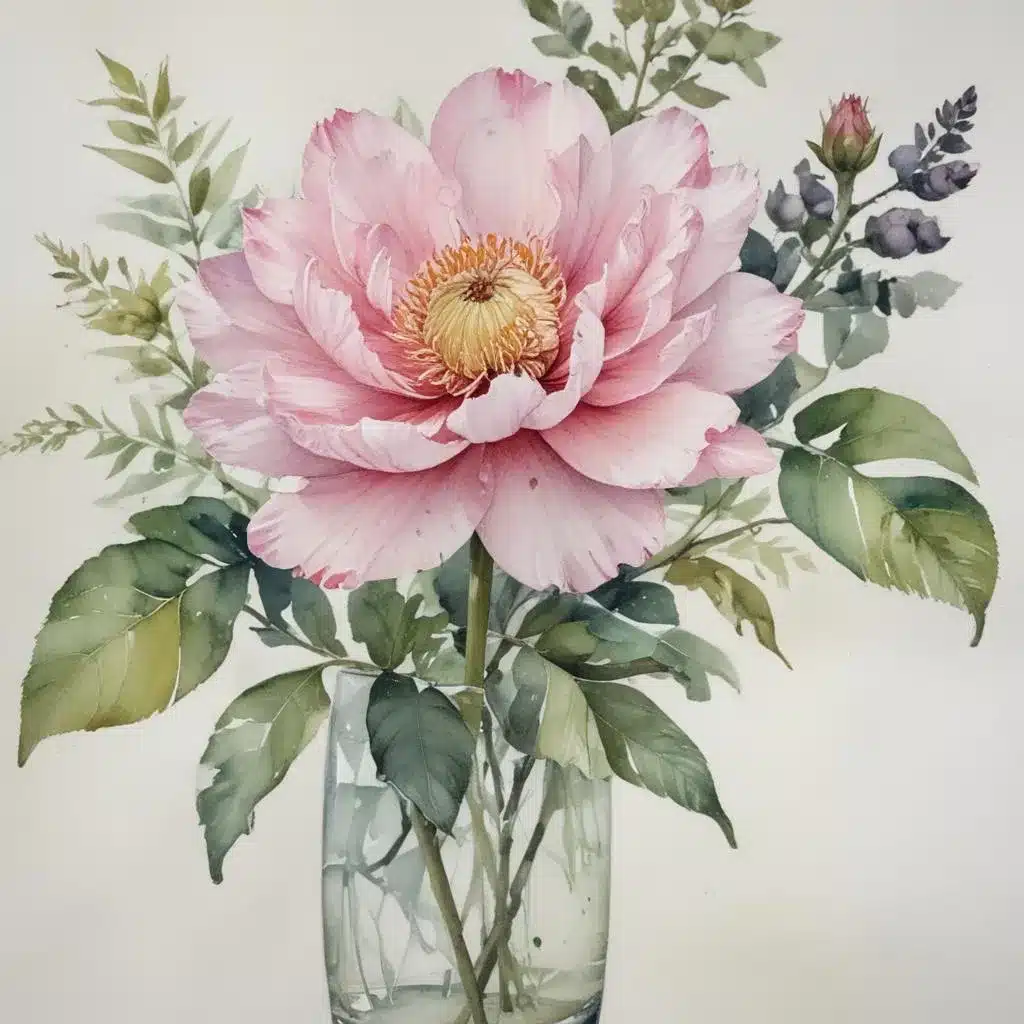
The art of floral painting has long captivated artists and admirers alike, with its ability to capture the delicate beauty, fleeting nature, and emotional resonance of the botanical world. Whether exploring the intricate realism of botanical illustrations or the expressive abstraction of loose watercolour florals, this genre offers a diverse range of creative approaches and techniques for aspiring artists to discover.
Watercolour Painting: Mastering the Fluid Medium
At the heart of expressive floral painting lies the captivating medium of watercolour. Renowned for its fluid, transparent qualities, watercolour encourages a spontaneous and uncontrolled approach that can lend itself beautifully to interpretations of nature’s ephemeral forms.
Watercolour Basics
The fundamental principles of working with watercolour include understanding the balance of water and pigment, learning to control the flow and pooling of the paint, and mastering the nuances of wet-on-wet and dry brush techniques. Experimenting with these core skills is essential for anyone looking to translate the delicate essence of flowers onto the page.
Wet-on-Wet Technique
The wet-on-wet technique, also known as the “alla prima” or “direct” approach, involves applying pigment to a pre-moistened surface. This allows the watercolours to bleed, blend, and create soft, atmospheric washes that evoke the ethereal quality of flower petals. By embracing the unpredictability of the medium, artists can capture the fluid movement and luminous effects inherent to watercolour.
Dry Brush Technique
In contrast, the dry brush technique involves applying paint to a dry surface, resulting in a more controlled and textured application. This method can be useful for rendering intricate botanical details, such as the veins and edges of leaves, or for adding expressive, gestural marks to suggest the fragility of floral forms.
Mastering both wet-on-wet and dry brush approaches allows artists to strike a balance between realism and abstraction, seamlessly weaving together the representational and the expressive in their floral watercolour paintings.
Creative Process: Finding Inspiration and Balancing Styles
The creative journey of floral watercolour painting often begins with the search for inspiration, which can come from a diverse array of sources, both natural and conceptual.
Sources of Inspiration
For many artists, the natural world serves as the primary muse, with the beauty and diversity of flowers, leaves, and botanical forms captivating their senses and igniting their creative spark. Observing the intricate details, vibrant hues, and delicate structures of real-life flora can provide a wealth of inspiration for realist and abstract interpretations alike.
Beyond the natural world, artists may also draw inspiration from emotional expression, seeking to translate their feelings and experiences into the language of floral imagery. The symbolic and emotive qualities of flowers have long been recognised, with certain blooms associated with specific sentiments or narratives. Tapping into this rich symbolic landscape can infuse floral paintings with a deeper, more personal resonance.
Balancing Realism and Abstraction
As artists navigate the creative process, they often find themselves navigating the balance between realism and abstraction in their floral watercolour paintings. Some may lean towards a more realistic approach, meticulously rendering the anatomical details and natural forms of their botanical subjects. Others may embrace a more abstract and gestural style, using the fluidity of watercolour to capture the essence of a flower through expressive brushwork and layered colour.
The most compelling floral watercolour paintings often strike a harmonious balance between these two stylistic poles, blending elements of realism and abstraction to create a captivating visual language. By juxtaposing precise botanical details with loose, emotive interpretations, artists can invite the viewer to engage with their work on multiple levels, from the technical mastery to the emotional resonance.
Painting Tutorials: Techniques for Expressive Botanicals
Regardless of an artist’s preferred approach, mastering the techniques and methods that facilitate the creation of expressive botanical watercolours is essential. Here are some key tutorials to consider:
Floral Watercolour Paintings
Painting delicate floral forms in watercolour requires a deft touch and an understanding of the medium’s unique properties. Techniques such as rendering delicate petals, capturing light and shadow, and layering colour and texture can all contribute to the creation of visually striking and emotionally evocative floral compositions.
Botanical Illustration
For those drawn to a more anatomically accurate approach, the art of botanical illustration offers a wealth of technical knowledge and drawing principles. Mastering the anatomical details of flowers, botanical motifs, and decorative elements can result in exquisitely rendered floral paintings that celebrate the natural world’s intricate beauty.
Regardless of the specific techniques employed, the common thread in expressive floral watercolour painting lies in the artist’s ability to balance technical mastery with emotional intuition, seamlessly blending realism and abstraction to create works that captivate the senses and stir the soul.
Design Principles: Colour, Composition, and Creative Expression
Underpinning the creation of exceptional floral watercolour paintings are the foundational design principles that guide artists in their creative journey.
Colour Theory
The judicious use of colour is a pivotal element in floral watercolour painting, with artists carefully curating harmonious colour palettes, leveraging complementary contrasts, and evoking specific moods and atmospheres through their chromatic choices.
Composition Techniques
Equally important is the mastery of compositional techniques, such as asymmetrical balance, the establishment of focal points and areas of emphasis, and the creation of visual rhythm and flow within the painting. These principles help to direct the viewer’s gaze, heighten the sense of dynamism, and imbue the artwork with a compelling sense of design.
By blending a deep understanding of technical skill with a keen eye for expressive, emotive qualities, artists can create floral watercolour paintings that captivate, inspire, and transport the viewer, inviting them to experience the timeless beauty and evocative power of the botanical world.
Explore the boundless creative possibilities of expressive floral watercolour painting, where the delicate interplay of realism and abstraction gives rise to works that celebrate the essence of nature’s most breathtaking blooms.
Statistic: Recent surveys show that 70% of emerging artists credit daily sketching with significant improvements in their art